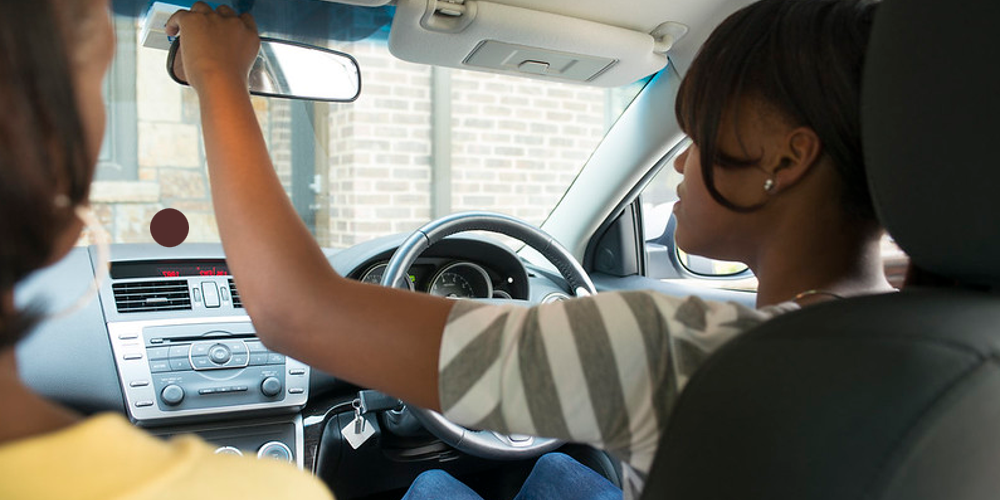
 Being a driver involves much more than sitting in a car and operating the controls. But knowing how to sit and reach the controls is an excellent place to start!
Being a driver involves much more than sitting in a car and operating the controls. But knowing how to sit and reach the controls is an excellent place to start!
Driving a car starts with a cockpit drill. But before you can do this drill, you need to get into the car!
You might have got into cars 1000's of times - but did you ever stop to think about the safety? If your car is parked on the left it's a good idea to walk around the back of it when getting in - this way you can see approaching cars and the car drivers can see you - ask your instructor about this.
The cockpit drill is a routine that you will carry out whenever you get into the driving seat.
You need to make sure that you can reach all the controls and see clearly outside the car and in the mirrors.
Although this routine is the first thing to do when you get into the driver's seat, there are some other things to consider before you get in.
As a driver, you are responsible for the vehicle you drive - even if you don't own it.
During your lessons, you will learn about making basic checks when preparing for the 'Show/Tell' driving test questions - but these checks are not really about the driving test. The checks are about the safety of your family, your friends and you. General safety checks will include lights, tyres, windows, loads and everything else that affects safety.
Making sure that your car is safe and well maintained will save money in running costs. But more important - checking your tyres, lights, and other items will reduce your risk of being in a crash.
The cockpit drill information in this lesson explains a method called 'DSSSM' - this is an easy way to remember everything you need to do and is taught by many driving instructors. But don't worry if you don't always do things in the exact order explained here. The important thing is that you don't forget anything.
Examiners will not be expecting you to complete a full cockpit drill. They know you have driven the car to the test centre and that any adjustment to your seat and mirrors, etc., will already have been made. But.
It's always worth double-checking that your mirrors are correctly adjusted. Also, glance across to make sure that the examiner's door is closed and that they have fastened their seatbelt before you move off.
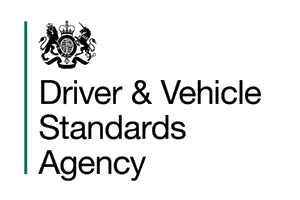 The examiner will want to see that:
The examiner will want to see that:
your seating position allows you to operate the controls and see out of the vehicle
your head restraint is correctly adjusted
you have checked that the doors are properly closed
Also, there must be sufficient fuel for the test!

Make sure that all the car doors, including passenger doors, are closed.
If you are carrying young children, use the child locks on the rear doors. These allow the doors to be opened from the outside but not from the inside.
The rear door on a hatchback or estate car has to be closed correctly to prevent your shopping, dogs, garden furniture or whatever from falling out onto the road (obviously!). What might not be so obvious is that poisonous exhaust fumes will seep in through a door that is not closed tightly.
To check that your doors are closed, pull them firmly shut and ensure that your passengers do the same.
As a visual check, you can look in your exterior mirrors and check that the 'line' of the car is smooth - get your instructor to show you this. Most cars have a warning light on the dashboard to indicate whether the doors are properly closed.
 The design of modern car door locks prevents them from bursting open in an accident, whether or not the door is locked, but the doors can be opened by opportunist thieves, especially in large towns and cities.
The design of modern car door locks prevents them from bursting open in an accident, whether or not the door is locked, but the doors can be opened by opportunist thieves, especially in large towns and cities.
Having the doors locked will help some drivers relax and pay more attention to driving.
Many car doors lock automatically when the car reaches a certain speed (usually between 5 & 10 mph). Most cars have central-locking so that you can lock the doors from the driving seat.
Do what feels best for you, both before and after you have passed your driving test.
Because cars usually park on the left, you have to be especially careful to check for cyclists (and other traffic) when opening your car door from the driver's seat. The Highway Code recommends a method called the 'Dutch Reach'. While it's not a check that you make before driving, it is something you should think about from the first time you sit in the driving seat.
The Dutch Reach helps to make sure that you check all the surroundings and blind spots before opening your car door.
The method was first used in the Netherlands in the 1970s and has since been adopted in other countries.
The video below explains the method.
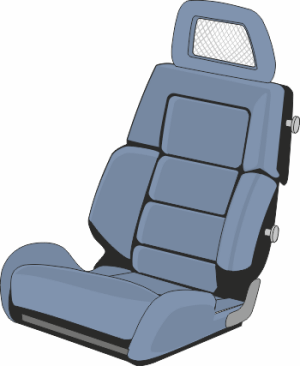
In most cars, there are three or four seat adjustments to consider:
Adjust the driving seat when you are satisfied that all the doors are securely closed.
In a manual car, you should be able to press the pedal on the left (the clutch pedal) down to the floor with your left foot without stretching your leg.
In automatics, hybrids and electric cars, you need to be able to press the brake pedal firmly and reach the steering wheel, as explained below.
By law, you must be seated so that you can operate all of the controls and have a clear view from the vehicle.
Apart from problems with control and observation, a poor seating position will cause fatigue on longer journeys and can cause back problems, especially for full-time drivers who cover long distances (van, taxi, truck, etc.). Being uncomfortable will also reduce your concentration.
Seat adjusters vary in different cars.
Many cars now have electric seat adjusters - the buttons to control the seat are usually on the right-hand side of the seat. Where the adjustment is not electric, there is usually a bar or lever attached to the front of the seat (near floor level). Lifting the bar or moving the lever will allow you to slide the seat backwards and forwards.
Manual transmission car: Your left knee should be bent slightly with the seat supporting your thigh when you press the clutch pedal down to the floor - you should be able to press the clutch down without stretching your leg.
Auto, hybrid and electric: You should be able to press the footbrake firmly with the seat supporting your thigh and without stretching your leg.
The backrest should be adjusted so that you can reach all around the steering wheel rim.
Your arms should be slightly bent when you position your hands at the ten-to-two or quarter-to-three position on the wheel.
You can check your distance from the wheel by resting your wrists on the top of the wheel. Your arms should be straight but not stretched while the back of the seat is fully supporting your back.
You will often see drivers who sit too close to the wheel. If you are too close to the wheel, you will not be able to control the steering effectively.
You can adjust the steering wheel's height in many cars, but be careful when adjusting the height. The steering wheel can block your view of the speedometer or other instruments, such as the indicator warning lights in certain positions.
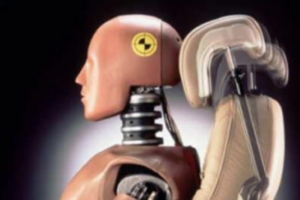
The head restraint is a safety device designed to protect you in the event of an accident or sudden stop. They were invented in the 1950s but only became commonplace in UK cars in the 1980s.
When a car stops suddenly, the driver and passengers get thrown forwards - that's why seatbelts are essential - the seatbelt restrains the body, but the head is still jerked forwards and then sharply backwards.
If a car gets hit from behind, your head gets jerked backwards. In both of these situations, the head restraint prevents excessive moving and stretching of the neck and prevents the likelihood of serious injury.
The supportive portion of the restraint (the bit that your head would hit if you were unlucky enough to crash) should be level with your ears; this will usually mean that the top of the head restraint is level with the top of your head.

Both you and your passengers must wear their seatbelts (except when they have a medical exemption certificate). But the law is not the reason for wearing a belt - you wear your belt for safety.
Adult passengers are responsible for their own seatbelt use, but you should remind them if they forget.
Your insurance company may not pay out for claims made by un-belted passengers. Also, un-belted passengers pose a severe risk in an accident as they can injure others if they get thrown around inside the car.
UK drivers are responsible for belt-wearing by passengers under 14 years of age.
Ensure that under 14's wear either a regular belt or a restraint designed for their size and age. You don't need to learn all the rules about children in cars if you do not intend to carry them, but if you have kids in your car, they must be correctly restrained.
You can find detailed information about carrying children by clicking here:
Your belt should fit so that the shoulder part of the belt is comfortable across your collar bone and away from your neck, and the lap belt part is low across your hips, below your tummy. Ensure that the belt is not twisted and is clicked in place securely.
An unrestrained child in the back seat can be thrown forward in an accident. But many people don't understand that the child's weight can be equivalent to a baby elephant when thrown forward at speed!
Would you fancy a baby elephant jumping out of a third-floor window and landing on top of you? That's what it would be like if an unrestrained child were thrown forwards in an emergency!
You will find seatbelt rules and exemptions on the Government website.

Check that your mirrors are correctly adjusted every time you drive.
Your mirrors show you what's happening behind, but there are 'blind spots' to the sides where things could be hidden from view. You will learn more about blind spots in the next lesson (Moving Off).
Check the mirrors from your normal driving position. In some cars, it might be necessary to adjust the outside mirrors before you fasten your seatbelt.
Adjust your interior mirror to see as much of the road behind as possible with little or no head movement.
Avoid touching the mirror glass with your fingers when adjusting the mirrors.
Door mirrors are often made with convex (curved) glass.
Convex mirrors distort the image of following vehicles, making them seem further away than they are. Because of this, you should never rely on outside mirrors alone; to accurately assess the road and traffic situation behind, it's usually best to use the inside mirror and one, or both, of the door mirrors. In general driving it's normally best to use the inside mirror first, but there will be times when it will be best to start with an outside mirror The decision depends on the situation you are in.
If you can see the side of your car in the mirrors (as shown), you will have a good idea of other road users around your vehicle and get the furthest view back.
Adjust your interior mirror to see as much of the road behind as possible without moving your head.
The pictures give you an idea of the view from correctly adjusted door mirrors when sitting in your normal driving position.
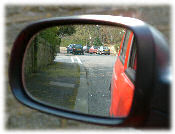
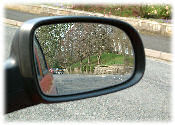
Click here to complete the quiz for this lesson
 (The page will open in a new window/tab)
(The page will open in a new window/tab)
You will find references for the answers in this lesson.
You can check your answers as you go along or complete the whole quiz before checking.
Leaving the check to the end is a valuable way to test yourself.
When you check or review your answers, we will briefly explain the answers.
Good Luck!